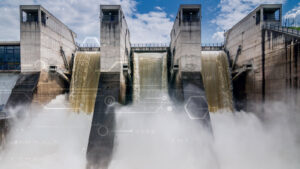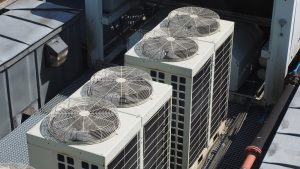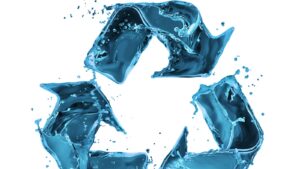Trust is the centre of any healthy relationship’s wellbeing; this concept applies to the relationship between the government and the public too. Having trust in the government is the cornerstone to the public to believe, participate and collaborate with the government without any question. When losing public trust, the governments have to spend an abundance of time and money to rebuild it, which is most often a significant challenge to most governments. However, the smartest decision is to build and retain public trust, but how can a government do this?
A sharp drop in public trust can lead to a detrimental political turning point in any country. Underlining public trust with a strong foundation of public services and responsibilities is essential to any state or governmental organisation. One of the significant responsibilities of any government is the unbridled water and wastewater services. Water utility service enablers take many approaches in maintaining the infrastructure of water systems, the quality of water and the uninterrupted service of potable and recycled water.
Smart technologies play an important role in ensuring that water service enablers can retain the public trust even under challenging conditions; like:
A sharp drop in public trust can lead to a detrimental political turning point in any country. Underlining public trust with a strong foundation of public services and responsibilities is essential to any state or governmental organisation. One of the significant responsibilities of any government is the unbridled water and wastewater services. Water utility service enablers take many approaches in maintaining the infrastructure of water systems, the quality of water and the uninterrupted service of potable and recycled water.
Smart technologies play an important role in ensuring that water service enablers can retain the public trust even under challenging conditions; like:
- Extreme weather conditions
- Fluctuating water demands
- Hazardous natural events
- Impurifying or contaminating water bodies
- The urbanisation that leads to stretching water infrastructure
- Variatingly degrading critical infrastructure expands to tens to thousands of kilometres and more.
New-age Water Service Enablers Rely Too Much Yet Sufficiently on Technologies; But Why?
The immunity of governments to technological disruptions keeps increasing with their endeavours to retain updated technology due to the impacts of the COVID-19 impacts that caused havoc globally. Technologically-robust governments have shown phenomenal upgrades in becoming flexible and responsive to the conservation requirements of a country’s natural habitat, communities, and law and order.
Today’s water service enablers utilise the power of industry 4.0-defined technologies like AI, Digital Twin, Predictive Analytics, IIoT Sensors, Satellite-based remote sensing predictions, and more. These technologies create a reliable roadmap to grow and ensure public trust in the context of enabling water services. Water service enablers complacent to such technology adoptions are stranded at bay, and more critically, they are being led towards declining the public’s trust.
Hence, most water service enablers who rely on technology upgrades meet their goals and objectives optimally. Automated public water services, optimised maintenance systems, well-versed risk mitigation at hazardous or extreme weather conditions, better approaches to recover from stifling economic events have led to earning undoubted public trust. Here are a few technologies that water service enablers can use to ensure they earn declining public trust.
Today’s water service enablers utilise the power of industry 4.0-defined technologies like AI, Digital Twin, Predictive Analytics, IIoT Sensors, Satellite-based remote sensing predictions, and more. These technologies create a reliable roadmap to grow and ensure public trust in the context of enabling water services. Water service enablers complacent to such technology adoptions are stranded at bay, and more critically, they are being led towards declining the public’s trust.
Hence, most water service enablers who rely on technology upgrades meet their goals and objectives optimally. Automated public water services, optimised maintenance systems, well-versed risk mitigation at hazardous or extreme weather conditions, better approaches to recover from stifling economic events have led to earning undoubted public trust. Here are a few technologies that water service enablers can use to ensure they earn declining public trust.
Technologies That Ensures Undying Public Trust for Water Service Enablers
There are a plethora of technologies that facilitate water service enablers. Still, a few of them are the new-age technologies that offer extraordinary strength, potential and power for governmental water service enablers to ensure unscathed public trust. Here are a few technologies that offer amazing advantages for water service enablers to build and retain public confidence.
AI-driven Predictive and Prescriptive Technology
AI technology allows governmental organisations to train ML models to ensure the safety and plentiful supply of water for target communities. This technology can concern the demographic changes, water usage in target locations, seasonal water consumption changes, the health of water service networks and environmental changes to predict and prescribe the best initiatives for water services. This technology ensures that water services are seamlessly and targeted appropriately when distributed across communities.
Algae Detection and Disaster Prediction Systems
One of the most critical challenges for water service enablers in Australia is to isolate HAB (Harmful Algal Blooms) when treating water for potability. Algae detection technology powered by IIoT driven sensors, water quality checking technology and smart visualisation tools, water service enablers can protect water from being contaminated or toxic for water users. This technology proves to the public that the water bodies infected will be isolated from the public and treated to safeguard the community, aquatic habitat, birds and pets.
CCTV and Laser Technology
The IIoT-powered CCTV and laser technologies can be used by the government to track down dynamically degrading water supply and reticulation networks. Thanks to this technology, water systems are no longer susceptible to spontaneous or untimed degradations. The information extracted by this technology can be used to understand the integrity and reliability of water systems based on their asset lifecycle behaviour. This technology ensures that every point of the water system is optimally performing, riskless and cost-efficient in operating. This way, the public funds are not wasted, and the communities are not disturbed during water inspection, diagnosing and maintenance programs.
Satellite Technology
Satellite technology is another intriguing technology advance that helps water service enablers to ensure the safety of communities, especially the communities that inhabit the neighbourhood of the catchment area. This technology uses EO (Earth Observation) data to discern future weather conditions, natural disasters and environmental impacts on water systems. The insights gathered from this technology helps in identifying HABs, disaster-prone areas, impending critical weather conditions and more. Proper adoption of this technology leads to safe and secured water services for the public.
Simulation-friendly Digital Twin Technology
Digital twin models allow the water service managers to interact with virtual models to ensure that all communities are 24/7 supplied with clean and enough water. This technology allows a scalable and interactive model of water systems and comprehensively displays all critical parameters that must be overseen appropriately to ensure water service responsibilities are met at all times. Even hard-to-reach assets in distant locations or underground can be managed, maintained and overhauled before they fail or meet risks. These models are used by managers to view the future conditions, performance status and integrity of all water infrastructure.
When upgraded with simulation technology, these models become indispensable tools for water service enablers. The simulation technology helps the managers key in unique parameters of highly-probable events like unique water demands, weather conditions, natural disasters and other social, economic and environmental events to see the sustenance and performance of water services. This way, the water service enablers do not have to do the hard work and exert unnecessary efforts in event-driven analysis.
AI-driven Predictive and Prescriptive Technology
AI technology allows governmental organisations to train ML models to ensure the safety and plentiful supply of water for target communities. This technology can concern the demographic changes, water usage in target locations, seasonal water consumption changes, the health of water service networks and environmental changes to predict and prescribe the best initiatives for water services. This technology ensures that water services are seamlessly and targeted appropriately when distributed across communities.
Algae Detection and Disaster Prediction Systems
One of the most critical challenges for water service enablers in Australia is to isolate HAB (Harmful Algal Blooms) when treating water for potability. Algae detection technology powered by IIoT driven sensors, water quality checking technology and smart visualisation tools, water service enablers can protect water from being contaminated or toxic for water users. This technology proves to the public that the water bodies infected will be isolated from the public and treated to safeguard the community, aquatic habitat, birds and pets.
CCTV and Laser Technology
The IIoT-powered CCTV and laser technologies can be used by the government to track down dynamically degrading water supply and reticulation networks. Thanks to this technology, water systems are no longer susceptible to spontaneous or untimed degradations. The information extracted by this technology can be used to understand the integrity and reliability of water systems based on their asset lifecycle behaviour. This technology ensures that every point of the water system is optimally performing, riskless and cost-efficient in operating. This way, the public funds are not wasted, and the communities are not disturbed during water inspection, diagnosing and maintenance programs.
Satellite Technology
Satellite technology is another intriguing technology advance that helps water service enablers to ensure the safety of communities, especially the communities that inhabit the neighbourhood of the catchment area. This technology uses EO (Earth Observation) data to discern future weather conditions, natural disasters and environmental impacts on water systems. The insights gathered from this technology helps in identifying HABs, disaster-prone areas, impending critical weather conditions and more. Proper adoption of this technology leads to safe and secured water services for the public.
Simulation-friendly Digital Twin Technology
Digital twin models allow the water service managers to interact with virtual models to ensure that all communities are 24/7 supplied with clean and enough water. This technology allows a scalable and interactive model of water systems and comprehensively displays all critical parameters that must be overseen appropriately to ensure water service responsibilities are met at all times. Even hard-to-reach assets in distant locations or underground can be managed, maintained and overhauled before they fail or meet risks. These models are used by managers to view the future conditions, performance status and integrity of all water infrastructure.
When upgraded with simulation technology, these models become indispensable tools for water service enablers. The simulation technology helps the managers key in unique parameters of highly-probable events like unique water demands, weather conditions, natural disasters and other social, economic and environmental events to see the sustenance and performance of water services. This way, the water service enablers do not have to do the hard work and exert unnecessary efforts in event-driven analysis.
Technology Remains to Retain The Public’s Reliance on Public Water Service Providers
Technologies’ long-held advantages and values lead to success in creating a healthy relationship with the public by ensuring they are sufficient services with clean and seamless water. They play a pivotal role in optimising the water service enablers to meet the best levels of water services and public trust. Therefore, it’s essential that the governmental water service providers depend on visionary technology disruptors to sustain themselves in the industry. Thanks to futuristic technology solutions, water service enablers now can lead to COVID-safe and community-secured futures.







